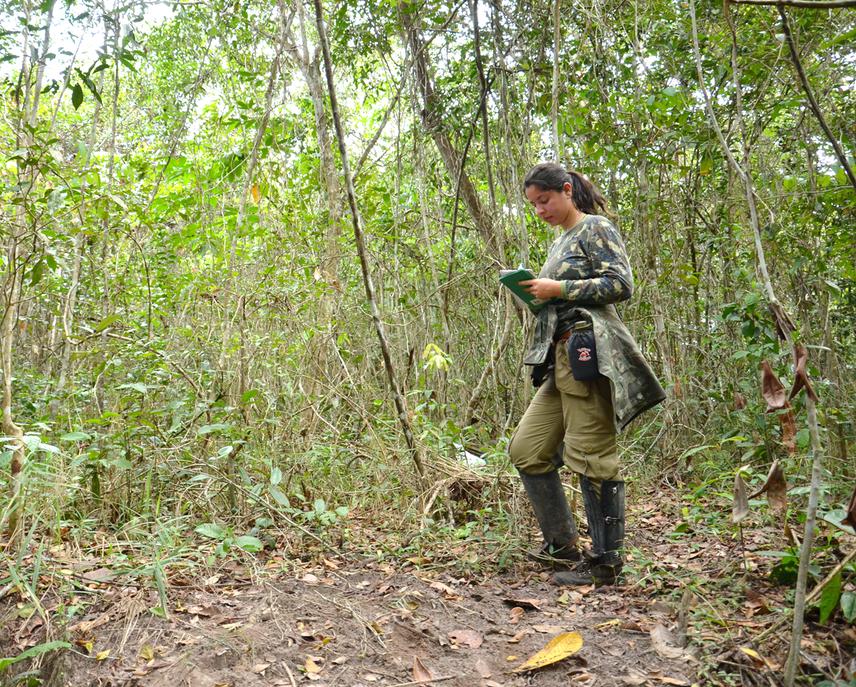Tainá Sherlakyann Alves Pessoa
Other projects
21 Oct 2016
Conservation of Large and Medium Size Mammals in Biodiverstiy-Friendly Agricultural Systems of the Brazilian Caatinga
We propose to understand and discuss the distribution, population parameters and conservation status of Alouatta belzebul and Sapajus flavius populations in Atlantic Forest remnants inserted in indigenous lands at Paraíba, being filled the gaps about the knowledge these species in the area.

Tainá Alves noting information about Sapajus flavius.
The blond capuchin monkey (Sapajus flavius) and red-handed howler monkey (Alouatta belzebul), both listed as endangered by IUCN and included as targets of the National Action Plan for the Northeast Primates Conservation (Northeast Primates NAP), occur in Atlantic Forest of Northeast Brazil, a region that has been historically affected by anthropic actions, inducing many species to isolation and local extinction. The indigenous lands of Paraíba state, Northeastern Brazil, has a long history of invasion and devastation by external agents, like the alcohol distilleries, which configured a mosaic of environments in which most of the current Atlantic Forest remnants are immersed amid an array of sugarcane. Such remnants harbor populations of both species of monkeys, targets of this project, and yet remain unexplored in this regard.
The biological and ecological aspects of the A. belzebul are recurrently best studied in amazonian populations, on detriment of scarce information about the Northeastern Atlantic Forest groups. In this latter case, behavioral ecology works and some geographic distribution mappings are highlighted. However, there is not still systematic study on the current conditions of these populations regarding your conservation status. In Paraíba, for example, only two populations have been studied over the years. The S. flavius, in turn, has been investigated since its rediscovery, being obtained information about the composition of groups, home range, population density, diet and threats. However, despite the efforts that have been employed, the data on populations of many forest remnants of the state are scarce or missing, especially those inserted in indigenous lands.
Therefore, the present work aims to understand and analyze the distribution, population parameters and conservation status of A. belzebul and S. flavius populations in Atlantic Forest remnants inserted in indigenous lands at Paraíba. For this, it will be employee the line-transect method and conducted semi-structured interviews with the indigenous community of the surroundings, seeking to discuss the current condition of these groups in the area, in order to contribute to the development of effective strategies for their conservation. The knowledge on how occur the relationship between human populations and the environment can provide rich information for their conservation, since their forms of use, especially hunting, affect directly the degree of threat that are submitted the species.